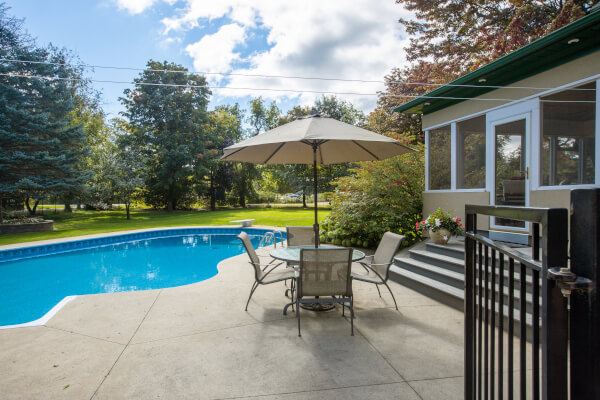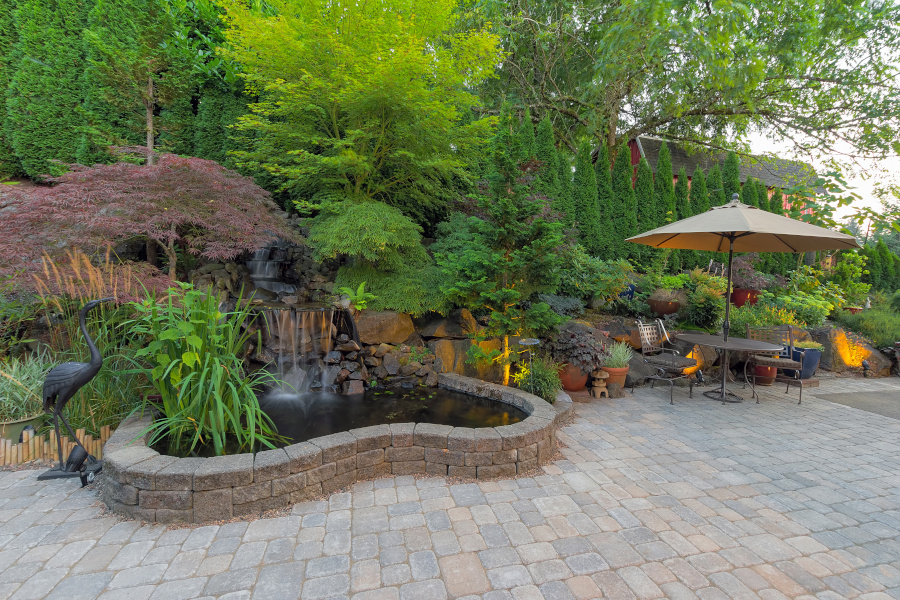
Building a Patio: Permits, Materials, and Maintenance Considerations
Building a patio in your yard can be a great way to add outdoor living space to your home. However, before you start construction, it's important to consider the permits and materials you'll need to ensure your project is completed safely and meets local building codes.
Building Permits
Before beginning any construction project, it's important to check with your local building department to determine if you need a permit for your patio. A building permit is a document issued by a local government agency that allows you to construct a structure on your property. The requirements for obtaining a permit vary depending on the location and size of your patio, so it's important to check with your local building department for specific requirements.

Materials
When it comes to patio construction, there are a variety of materials to choose from, including concrete, pavers, brick, stone, and more. Each material has its own unique set of benefits and drawbacks, so it's important to consider factors such as cost, durability, and maintenance when selecting materials for your patio.
Concrete is a popular option for patios due to its affordability, versatility, and durability. It can be poured into any shape or size, and it's also relatively easy to maintain. Pavers are another popular option, as they come in a variety of colors, shapes, and sizes, and they can be arranged in many different patterns to create a unique look. Brick and stone are also great options for patios, as they provide a classic and timeless look that adds character to your outdoor living space.
Adding metal patio loungers can further enhance the functionality and comfort of your outdoor area while complementing the timeless aesthetic. These durable loungers are perfect for relaxing and enjoying the beauty of your patio.
Consider using a patio roof experts like Trueline to build your patio. This ensures that the materials used are quality, and will last a long time.
Maintenance
Once your patio is built, it's important to maintain it properly in order to keep it looking great for years to come. This may include cleaning, sealing, and protecting the surface from damage. For example, if you have a concrete patio, you may need to clean it regularly to remove any dirt or debris, and you may also need to reseal it every few years to protect it from the elements. Pavers may need to be cleaned and resealed as well, and you may need to replace any broken or damaged pavers.
It's important to consider the long-term maintenance and upkeep of your patio. This may include replacing damaged materials, maintaining the surface and surrounding landscaping, and protecting the structure from weather and other environmental factors. By taking the time to properly plan and maintain your patio, you can ensure that it provides a functional and beautiful outdoor living space for many years to come.
Surroundings & Accessibility
When building a patio, it's important to also think about the surrounding landscape and how it will interact with your new structure. For example, you may need to add retaining walls or other structures to level the ground and prevent erosion. If you plan to add lighting or an irrigation system, you'll need to obtain the necessary permits and follow local codes and regulations.
Another important consideration is accessibility. If you have a large patio, you may want to consider adding ramps or stairways for easy access. If you plan to add furniture, you may also want to consider the placement of electrical outlets for lighting and other needs.
Summary
Building a patio is a great way to add outdoor living space to your home, but it's important to consider the permits, materials, and maintenance required to ensure your project is completed safely and successfully. By following these guidelines, you can enjoy your new patio for years to come.
Homes for rent: Homes for rent in Massachusetts
Homes for sale: Homes for sale in Massachusetts